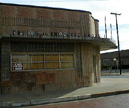
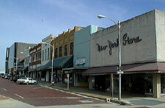
The city of Tyler was one of the earliest and most important centers of Jewish settlement in Texas. In the 1840's German Jews were percolating westward from Vicksburg and points east. Jews were among the leaders in all aspects of city life from the very beginning, which may be why the Tyler country clubs, unlike most other cities, have never been closed to Jewish membership. Before the railroads Tyler was an important transhipment point. Just as railroad development was reaching Tyler a yellow-fever epidemic in the region scared the city fathers into refusing railroad right-of-way passage. The railroads detoured around the city and stunted its growth for many years.


Before the turn of the century there were both Orthodox and Reform congregations established. Jewish merchants dominated the town square, as Jewish wildcatters held their own in the oil patch. A full range of Jewish goods and services was available, and by 1910 both congregations had constructed buildings.

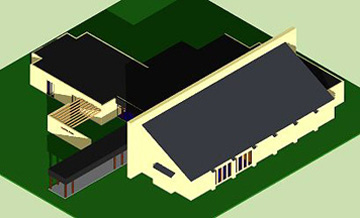
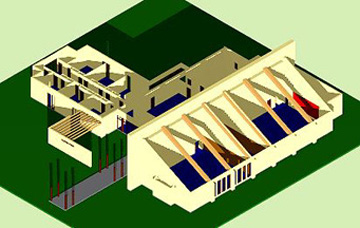
This is the third incarnation of Agudas Achim, constructed in 1982. The building demonstrations the typical modern medley of volumes sized for the various davening, learning, socializing functions and loosely packed on a larger suburban site.
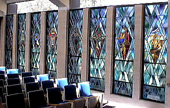
The stained glass windows in the new sanctuary above were removed from the old building below.
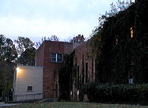
The congregation took over a former civic theater in the '40's, made the popular switch from Orthodox to Conservative, and reached its point of greatest energy and interest. The first generation (of Ashkenazim) was in its prime, the place was full of children, and postwar optimism looked like it'd never end.


Israel Smith (right), brought from Baltimore as an infant, qualifies as a Tyler native. An attorney, he spent his first year in practice (1933) as a process server. The story is told how he succeeded in serving the notoriously difficult oil tycoon H. L. Hunt by masquarading as a waiter during a poker game and laying the papers down with Hunt's drink. But Hunt always played poker with his gun on the table, and when he noticed what he had been served, he reached for it. Smith's knees knocked and teeth chattered as he waited for the end, but Hunt changed his mind, put his hand in his pocket and handed Smith a $20 gold piece and said. "kid, you've got guts, now go home."
(Dr.) Barry Green stands in the lobby of the shul in front of a rare plant he grew from a cutting. His interest in regional Jewish history has had much to do with this project. He is currently the editor and publisher of Parkinsonian Publications.

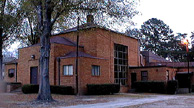
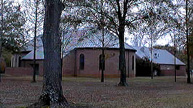
Until recent times there was little social mixing between the congregations. The Reform/German Jews represented (to themselves at least) "high church" and would have little to do with the Orthodox/Eastern European Johnie-come-latelies. Yet their separate histories closely paralleled each other. The building on the right, built in 1937, was much loved and abandoned for the new construction on the left in 1987 only after the neighborhood went bad among other things.

Miriam Buck came from a tiny town near Austin to visit her aunt and uncle in the big city of Tyler. An attractive and charming girl, she proved to be a big hit, extending her stay from one to six weeks, had a wonderful time, eventually married a local man, and now remembers 60 years of Temple Beth El history.